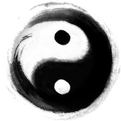Tai Chi (Taijiquan) is permeated with the concepts of “Yin and Yang” and “Void and Reality” throughout its practice. This is manifested in each Tai Chi movement, which embodies the principles of “Opening and Closing”, “Round and Square”, “Coiling and Uncoiling”, “Void and Reality”, “Light and Heavy”, “Soft and Hard”, “Slow and Fast”, and features unique forms of oppositional unity such as left and right, up and down, inside and outside, large and small, and advancing and retreating. These are the fundamental principles that constitute Tai Chi.
Tai Chi is not only unique in its external form but also has special requirements for internal cultivation. When practicing Tai Chi, one must first use intention rather than brute force. Thus, Tai Chi is an internal movement of intention, while externally it is a movement of spirit and energy. This means that one must cultivate both intention and energy. The characteristic of this intentional movement is the essence of Tai Chi and governs its various other characteristics.
Moreover, when practicing Tai Chi, the entire body should be elongated and exhibit a dynamic interplay of soft and hard, with elasticity. The movements require that when one part moves, all parts move, creating a continuous flow. The speed should vary between slow and fast, and the strength should balance softness and hardness. The posture and movements should be upright and centered, with the void containing the reality and the reality containing the void, embodying the opening within the closing and the closing within the opening. Only by meeting these conditions can Tai Chi fully exert its unique effects.
In terms of physical health, Tai Chi not only enhances the function of the limbs and internal organs but also trains and strengthens the ability to direct consciousness, which is the ability to “use intention without force”, allowing for smooth energy circulation throughout the body.
This practice cultivates both energy and intention, leading to mutual growth and strengthening, resulting in a naturally strong body. Similarly, in combat, it has its unique effects: it can use lightness to overcome heaviness, slowness to counter speed, and control nature while mastering it, achieving a state where all movements are interconnected, allowing for understanding oneself and the opponent, as well as grasping timing and momentum.
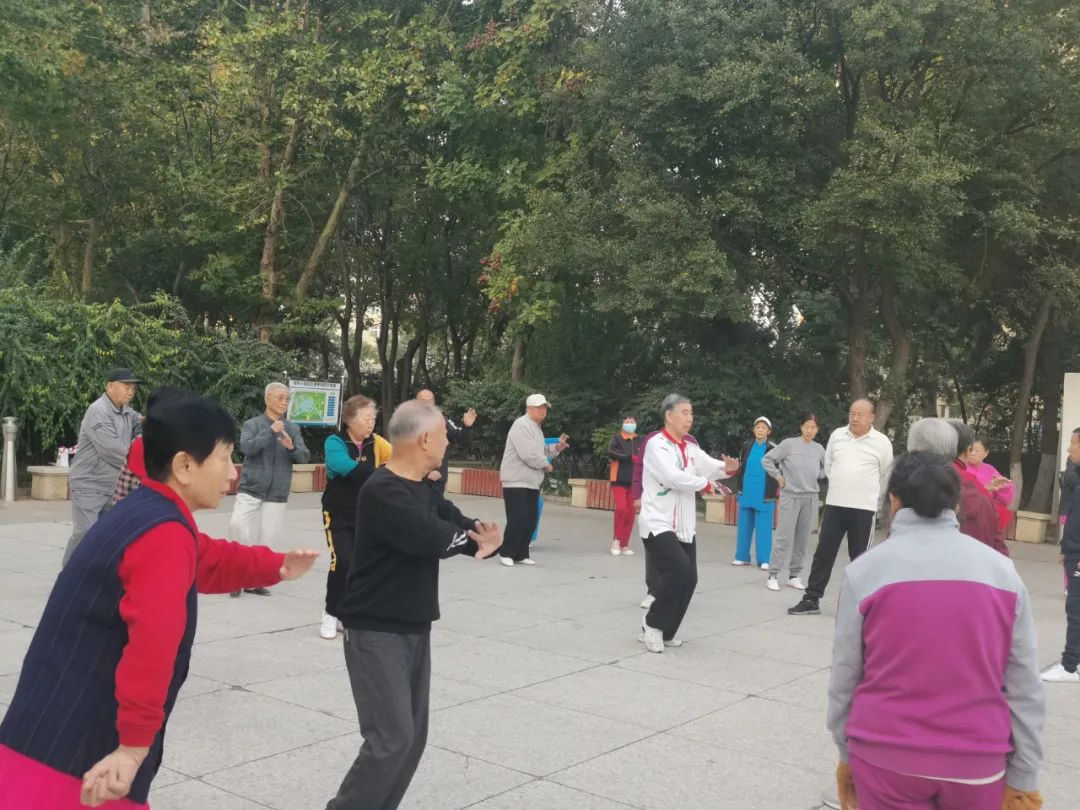
First Characteristic: Intentional Movement Governed by the Mind
(1) “Use the heart to guide the energy, ensuring calmness, to gather it into the bones”;
(2) “Use energy to move the body, ensuring smoothness, to facilitate the heart”;
(3) “The heart commands, the energy follows; energy nourishes directly without harm”;
(4) “The entire body’s intention is in the spirit, not in the energy; if in the energy, it becomes stagnant”.
From the above four points, it is clear that Tai Chi is a practice of using intention to cultivate intention, as well as a practice of using energy to cultivate energy. However, during practice, one must “use the heart to guide the energy”: the heart is the commander, and the energy is the flag that follows the command; every movement must be guided by intention rather than force, with intention leading to movement, allowing for “intention to reach energy, energy to reach strength”, resulting in calm and composed actions. After prolonged practice, one can gather it into the bones, achieving the deepest level of “energy movement”. Therefore, it can be said that Tai Chi is a form of intentional movement. “Using the heart to guide the energy”, “using energy to move the body”, and employing intention without brute force are the first characteristics of Tai Chi.
Key points for practicing Tai Chi are summarized as follows:
(1) During practice, focus your awareness on the movements, using intention to guide the energy, and do not merely contemplate how the internal energy flows.
(2) Movements should be smooth and composed, and when the strength reaches its endpoint, it should manifest distinctly; these are three measures to invigorate the intention and energy.
(3) Maintain a strong external spirit to avoid being dull or absent-minded, which in turn promotes the internal movement of intention and energy.
(4) Skillfully utilize the other seven characteristics to enhance the movement of intention and energy.
Second Characteristic: Elastic Movement of Elongated Limbs
(1) “Virtual lead at the top, energy sinks to the dantian”;
(2) “Hollow chest and raised back, shoulders sink and elbows drop”;
(3) “Relaxed waist and rounded stance, open hips and bent knees”;
(4) “Spirit gathers and energy collects, limbs are elongated”.
From the above four points, it can be seen that virtual leading at the top and energy sinking to the dantian elongate the body, while hollowing the chest and raising the back serves to elongate the back. Sinking the shoulders and dropping the elbows elongates the arms; relaxing the waist and rounding the stance, along with opening the hips and bending the knees, results in the legs being elongated in this specific posture. Therefore, the footwork in Tai Chi must be executed in a relaxed stance with open hips and bent knees, using the ankle to rotate the legs to interchange between void and reality. Externally, this appears as the coiling strength of the legs, but internally it promotes the elongation of the legs. This series of elongation also promotes the elongation of the entire body, resulting in elasticity and creating a buoyant strength. Moreover, due to the elongation of the entire body, the spirit can naturally uplift. Thus, as long as the posture of elongation is maintained, it becomes difficult to develop the habit of using brute force, providing conditions for natural relaxation and elongation of the limbs. Therefore, the elastic movement of elongated limbs becomes the second characteristic of Tai Chi.
Key points for practicing Tai Chi are summarized as follows:
(1) Tai Chi primarily practices buoyant strength, which arises from elasticity, and elasticity is born from the elongation of the limbs; thus, attention must be paid to the elongation of the limbs.
(2) The elongation of the body and upper parts must involve virtual leading at the top, energy sinking to the dantian, and hollowing the chest while raising the back.
(3) The elongation of the hands and feet must involve sinking the shoulders and dropping the elbows, relaxing the waist and rounding the stance, and the rotation of the hips and bent knees.
(4) When practicing buoyant strength, one should first seek softness to eliminate old strength (brute force), while simultaneously elongating to develop new elastic strength.
(5) Only by gathering the spirit and collecting the energy can one strengthen the internal factors of buoyant strength.
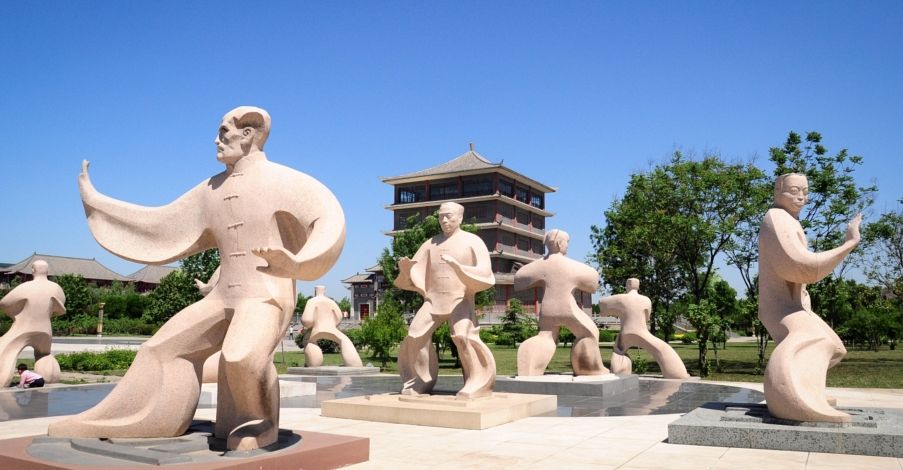
Third Characteristic: Spiral Movement of Coiling and Uncoiling
(1) “Move the strength as if drawing silk”;
(2) “Move the strength as if coiling silk”;
(3) “Follow the unfolding and gathering, and never depart from Tai Chi”;
(4) “With a skilled hand, one moves in Tai Chi, and the traces vanish into nothingness”.
From the above four points, it can be seen that Tai Chi movements must resemble the shape of drawing silk. Drawing silk is done in a rotating manner, as it is drawn straight within the rotation, naturally forming a spiral shape, which is the unity of opposites. The coiling strength or drawing strength refers to this meaning. Because during the coiling process, the extension and contraction of the limbs also produce a spiral image, it is said in Tai Chi theory that regardless of whether the movements are large or small, one must never depart from this unity of opposites in Tai Chi strength. After mastering this, the coiling circles become smaller and smaller, reaching a state where there is a circle but it cannot be seen, at which point it is purely guided by intention. Thus, the spiral movement of coiling and uncoiling becomes the third characteristic of Tai Chi.
Key points for practicing Tai Chi are summarized as follows:
(1) The coiling strength is the origin of the name Tai Chi; without coiling strength, one cannot make the strength circulate around the limbs, achieving a complete flow.
(2) It is essential to understand the requirement of “penetration”, which means that the movement must pass through the joints and also through the muscles above and below the joints; this is the effect of spiral coiling.
(3) Tai Chi has a pair of basic coiling movements and five pairs of directional coiling movements, which are the best tools for teaching and learning Tai Chi.
(4) Moving strength as if coiling silk can only be achieved under conditions of lightness and penetration; at the same time, the spirit and energy must be buoyant and inwardly collected.
(5) The application of coiling strength must avoid three defects: gaps, unevenness, and discontinuity.
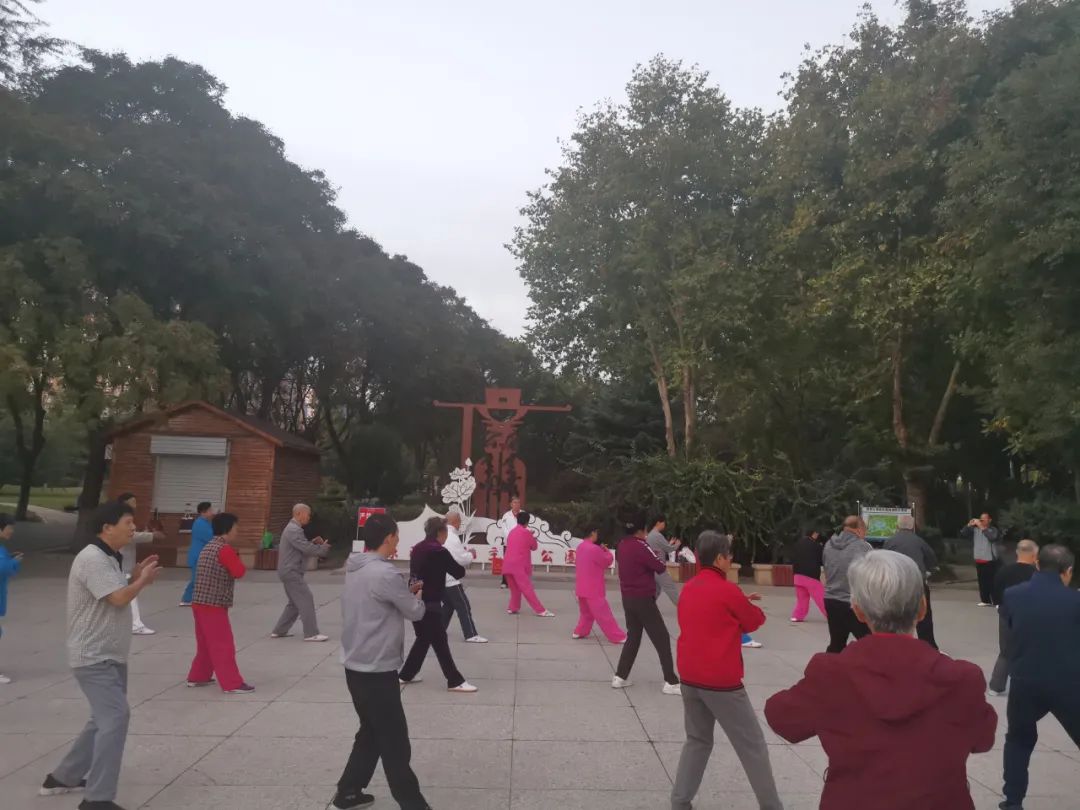
Fourth Characteristic: Upright and Centered, Following Up and Down Movement of Void and Reality
(1) “Intention and energy must be exchanged flexibly, thus there is a lively interest; the transformation of void and reality must be noted”.
(2) “Void and reality should be clearly distinguished; where there is one, there is the other; everywhere there is this unity of void and reality”.
(3) “To stand upright, one must be centered and comfortable, supporting in all directions”; “up and down movement follows, making it hard to invade”.
(4) “The tailbone is centered, and the spirit penetrates to the top”, “a straight line from top to bottom”.
The above four points illustrate that all movements in Tai Chi must clearly distinguish between void and reality. If the movements can clearly transition between void and reality, one can endure without fatigue, making it the most economical form of dynamic activity. Therefore, when practicing Tai Chi, both hands must embody void and reality, and both feet must also embody void and reality. It is especially important that the left hand and left foot, as well as the right hand and right foot, follow each other in distinguishing void and reality; that is, if the left hand is real, the left foot should be void, and if the right hand is void, the right foot should be real. This is the key to regulating internal strength to maintain a centered balance. Additionally, the formation of the landing point must have reality within the void and void within the reality, ensuring that everywhere there is this unity of void and reality, allowing internal strength to reach a state of balance. In the beginning, movements can be large in void and reality, gradually refining to small void and reality, ultimately achieving a state where internally there is void and reality, but externally it is not visible; this is the deepest level of regulating void and reality.
Key points for practicing Tai Chi are summarized as follows:
(1) Clearly distinguish the three main voids and realities: the feet’s void and reality, the hands’ void and reality, and the void and reality of one hand and one foot.
(2) Pay attention to adjusting the left hand and left foot and the right hand and right foot—this is the main key to “up and down movement following each other, making it hard to invade”.
(3) Based on the principles of lightness and heaviness, regularly check for deficiencies in your division of void and reality.
(4) Achieve the three states of double lightness, double heaviness, and half light and half heavy; this requires constant attention and long-term practice to develop.
(5) During push hands, do not forget the principle of “corner hand facing corner hand”. The four main hands and four corner hands should interchange and be practiced together.

Fifth Characteristic: Movement of the Waist and Spine Leading, Internal and External Harmonizing in Continuous Flow
(1) “The waist and spine are the primary rulers; when one moves, all move”;
(2) “The entire body must flow continuously, without any interruption”;
(3) “To achieve unity in the body, one must first ensure there are no defects”;
(4) “Moving energy is like a string of pearls, reaching every detail”.
From the above four points, it can be seen that to achieve the principle of one movement leading to all movements, the waist and spine must be the center, as the waist is the axis for lateral rotation, and the spine is the foundation for vertical bending. Tai Chi movements must not only rotate laterally but also bend vertically and horizontally, requiring the waist and spine to work together, forming a spatial curve that encompasses all directions. This means that only by centering on the waist and spine can the nine major joints of the body (neck, spine, waist, hips, knees, ankles, shoulders, elbows, and wrists) be sequentially connected. Additionally, one must ensure that the body is free of defects, flowing like a string of pearls, allowing the practice to progress to a state of unity. Therefore, the movement of the waist and spine leading, harmonizing internal and external in continuous flow becomes the fifth characteristic of Tai Chi.
Key points for practicing Tai Chi are summarized as follows:
(1) The waist and spine work together as the central axis, and the arm movements should have an angle (about 45 degrees);
(2) The “dynamic separation” and “static unity” generated from the central axis are the key to achieving continuous flow through centrifugal force;
(3) The opening within the closing and the closing within the opening are specific manifestations of continuous flow and smooth rotation;
(4) The continuous flow of strength is a means to enhance the application of strength;
(5) Reducing the mobility of the wrist joint is a necessary means to improve body mechanics.
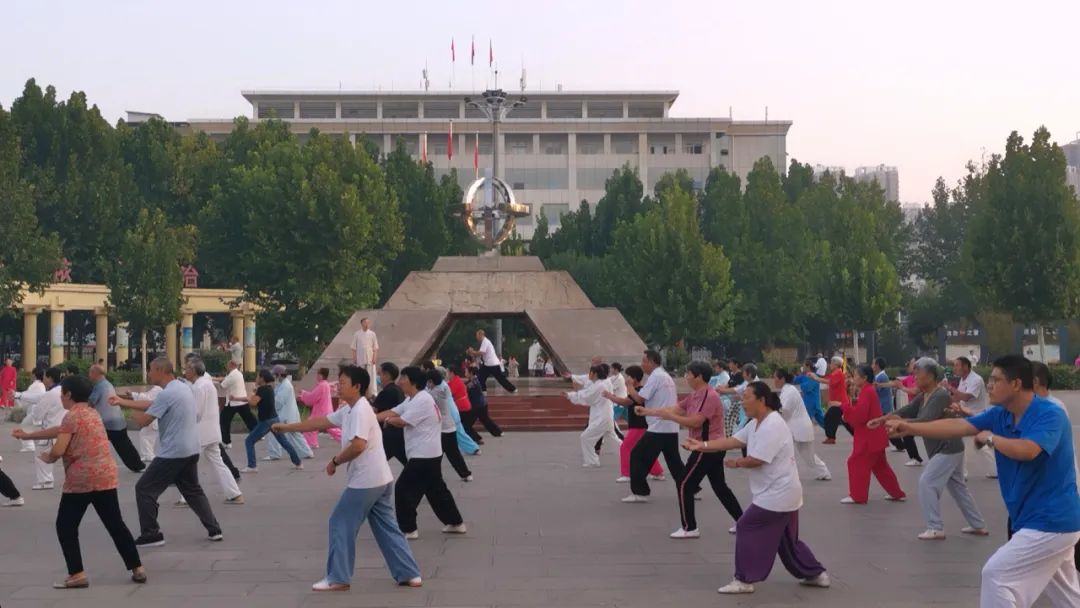
Sixth Characteristic: Continuous and Unbroken Movement Achieving a Unified Flow
(1) “There must be folding in the back and forth, and transitions in advancing and retreating”;
(2) “To gather is to release, to release is to gather”;
(3) “When the strength breaks, the intention does not break; when the intention breaks, the spirit can connect”;
(4) “Like the Yangtze River, flowing continuously, achieving a unified flow”.
From the above four points, it can be seen that Tai Chi not only requires one movement leading to all movements but also demands that during the practice of the entire form, one can further achieve a unified flow, with internal strength remaining unbroken. This is another method to increase the volume of movement. The specific method is: when encountering back and forth in hand techniques, one must incorporate folding; when encountering advancing and retreating in foot techniques, one must incorporate transitions; in opening and closing, there must be the meaning and strength of gathering and releasing. Of course, this characteristic, like the fifth, is achieved with the assistance of spiral coiling movements. If a break in strength occurs after issuing strength, one must continue the residual intention of that strength. If the intention also breaks, one must use the residual spirit of intention and strength to continue. To achieve this, strength must have folding and transitions, and movements must use intention rather than force, ensuring that the unity of gathering and releasing in body mechanics is like the continuous flow of the Yangtze River, with no space for releasing strength in between, nor any time for the intention to drift, thus naturally achieving the requirement of a unified flow. Therefore, continuous and unbroken movement achieving a unified flow can be regarded as the sixth characteristic of Tai Chi.
Key points for practicing Tai Chi are summarized as follows:
(1) When encountering movements that involve back and forth, there must be folding incorporated—this is a necessary measure to achieve continuous movement in hand techniques.
(2) When the body involves advancing and retreating, there must be transitions incorporated—this is a necessary measure to achieve continuous movement in foot techniques.
(3) If the strength breaks, there must be intention present; if the intention is absent, there must be spirit present; this is the method to remedy a break in strength.
(4) If one can walk the form with buoyant spirit, it proves that intention has been focused on the movements. The presence of intention is a sign of continuous internal strength.
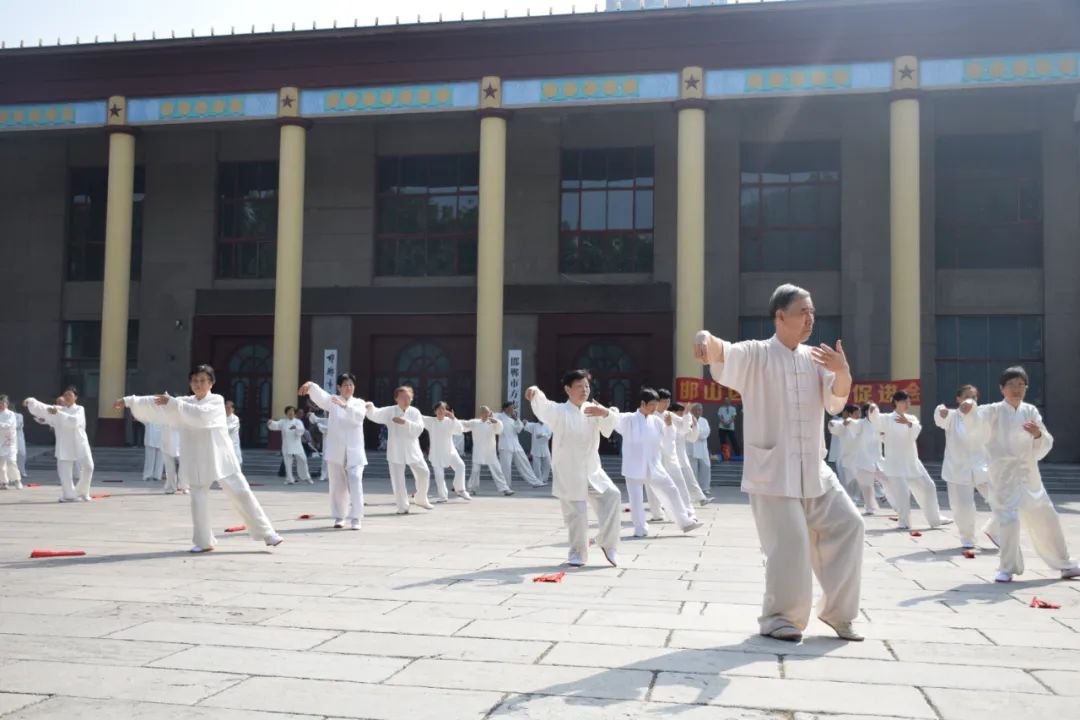
Seventh Characteristic: Movement of Harmonizing Softness and Hardness
(1) “Move the strength like tempered steel, what is unbreakable?”, “extreme softness leads to extreme hardness”.
(2) “Externally soft, internally containing hardness; always seek softness externally, and over time, one can obtain internal hardness; it is not a hardened heart, but rather a soft heart”.
(3) “Tai Chi must not lose its softness. The entire body moves back and forth, based on spirit and intention, and with prolonged practice, it naturally connects”.
(4) “The skill of moving strength first transforms hardness into softness, then practices softness into hardness. At its peak, it is both soft and hard. When softness and hardness are balanced, Yin and Yang are revealed. Therefore, this fist cannot be named hard, nor can it be named soft; it is simply named for the namelessness of Tai Chi”.
From the above four points, it can be seen that the study of Tai Chi first requires the destruction of the original hardness in one’s movements, transforming it into softness; this is the period of softening, and the longer this period lasts, the more thoroughly the rigidity can be destroyed. The key point during this time is to maintain softness, while progressing towards a more elastic hardness. This hardness is not produced from effort and force but arises from relaxation and elongation, creating an elastic hardness. Because the limbs are elongated and continuously coiled, this elasticity can be generated. Therefore, it can also be referred to as “buoyant strength hardness”. Only this elastic hardness can meet the requirement of “externally soft, internally containing hardness”. The transformation between softness and hardness is controlled by the manifestation of spirit and intention. The so-called “hidden is soft, visible is hard” reflects this principle. As one’s skill advances, the strength can be deeply hidden, making the external form appear extremely soft, while internally, the quality becomes even harder. Therefore, the movement of harmonizing softness and hardness becomes the seventh characteristic of Tai Chi.
Key points for practicing Tai Chi are summarized as follows:
(1) In the early stages, one should eliminate the original rigidity, the softer, the better; this period should ideally last one to two years.
(2) Once the entire body is practiced to be soft, one can then specifically practice the elongation of the entire body to cultivate hardness.
(3) Use softness for energy movement and hardness for landing points; this is the boundary for distinguishing softness and hardness in Tai Chi.
(4) The combination of heart and intention with the manifestation and breath is the principle for the transformation of softness and hardness in Tai Chi.
(5) Achieving both softness and hardness at a high level is the standard for being recognized as a master in Tai Chi.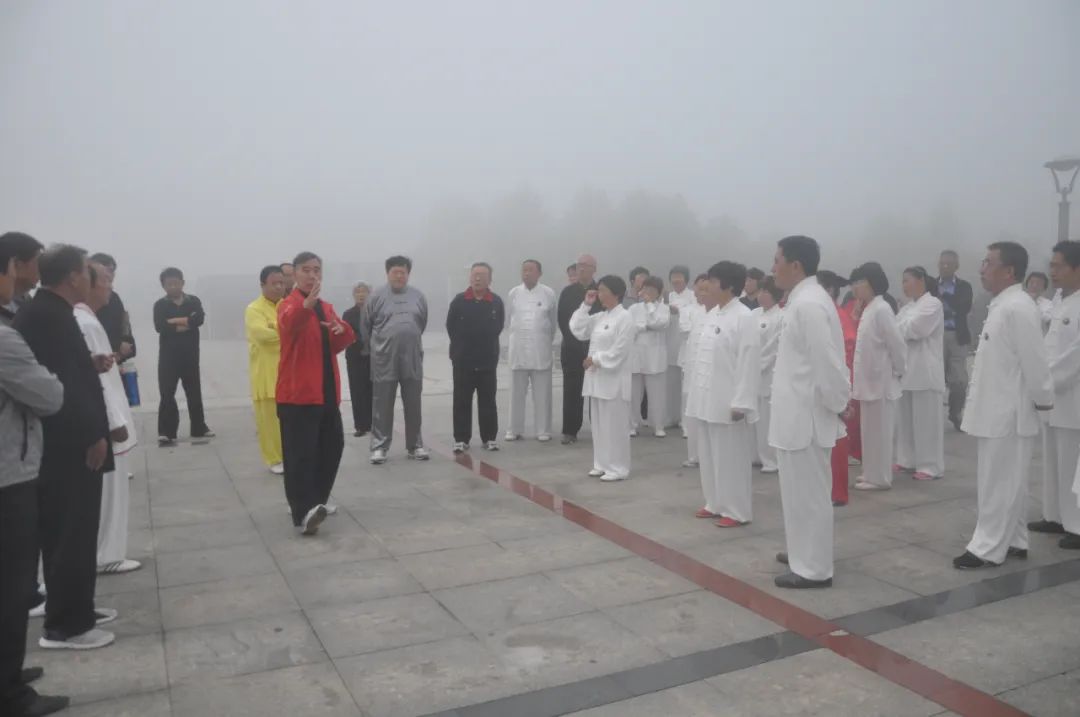
Eighth Characteristic: Movement of Alternating Speed from Slow to Fast and Fast to Slow
(1) “When the movement is urgent, respond urgently; when the movement is slow, follow slowly”;
(2) “If the opponent does not move, you do not move; if the opponent moves slightly, you move first”;
(3) “Beginners should practice slowly; slow should not be dull; after practice, speed up, but speed should not be chaotic”;
(4) “The form resists the Five Mountains, the momentum presses the Three Peaks, transitioning from slow to fast, from shallow to deep”.
From the above four points, it can be seen that when initially practicing the Tai Chi form (one round), the movements should be as slow as possible, allowing for more time to make corrections and identify any awkwardness. However, as proficiency increases, one can gradually speed up, shortening the time required to complete one round of the form. Yet, transitioning from slow to fast must also have a limit; one must achieve speed while maintaining composure and still demonstrating distinct strength without becoming erratic or chaotic. This applies to the time taken to practice one round of the form. Under the overarching principle of being able to move slowly and quickly, when applying each punch, this principle must unify the opposites of speed and slowness within a single punch; that is, slow at the transition points, gradually speeding up after passing the transition, reaching the fastest point at the landing, and then returning to slow, repeating this cycle. Therefore, each punch in Tai Chi must undergo training in both slow and fast movements, allowing for the conditions to be created during push hands where “if the opponent moves slightly, you move first; when the movement is urgent, respond urgently; when the movement is slow, follow slowly”, achieving the unity of alternating speed. Thus, the movement of alternating speed from slow to fast and fast to slow becomes the eighth characteristic of Tai Chi.
Key points for practicing Tai Chi are summarized as follows:
(1) In the early stages, practice slowly to allow for opportunities to check and correct.
(2) Seeking slowness must be based on uplifting spirit and exchanging intention as a prerequisite.
(3) As proficiency increases, gradually shorten the time required to complete one round of the form. However, seeking speed must be based on maintaining composure and demonstrating distinct strength.
(4) The principle of alternating speed is to be slow at the transition points, gradually speeding up after passing the transition, and slowing down again after the landing point. At the same time, the energy movement should be slow at the transition and fast at the landing.
(5) Throughout the entire form, the amplitude of changes in speed should be uniform and clear.
This platform has updated the teaching videos as follows:
Yang Style Tai Chi 85 Forms Simplified 42 Tai Chi
Simplified 24 Tai Chi Chen Style Old Frame Second Road Cannon Fist
Chen Style Old Frame First Road Fist Chen Style 32 Throwing Techniques, Seizing
Master Chen Xiaowang’s Health Preservation Posture TeachingVideo
Click the public account below to follow, and reply with the number as prompted to obtain!

